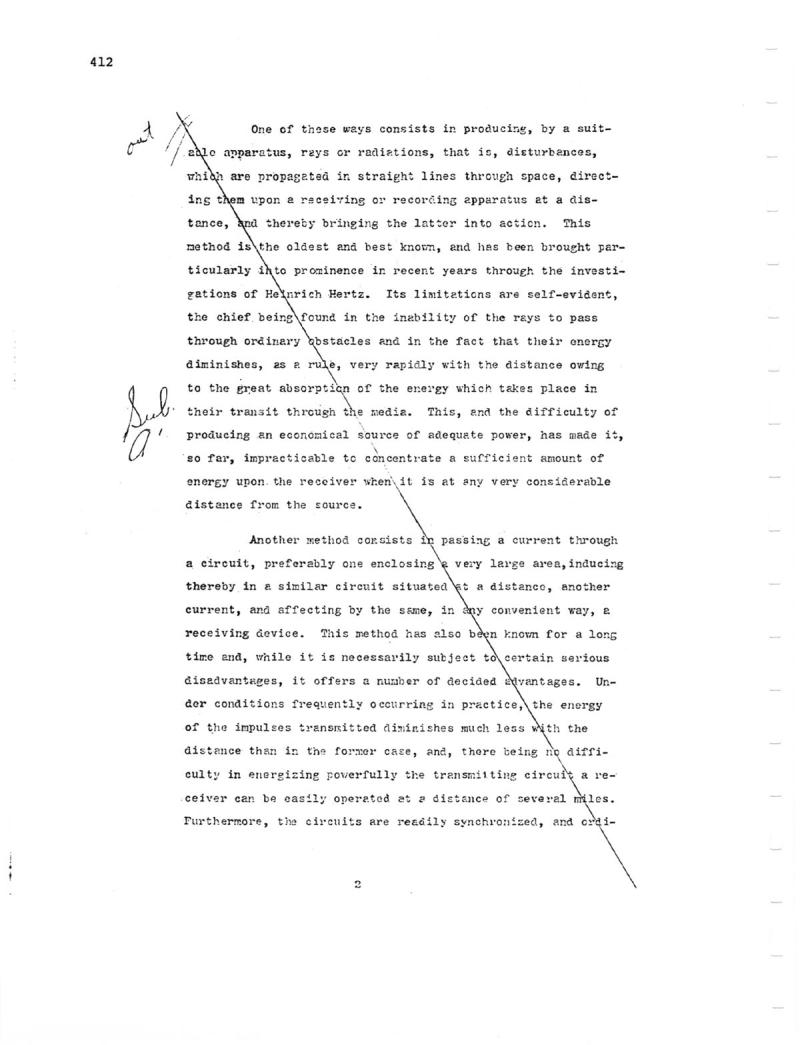
Nikola Tesla Patents
412 out Sub. a One of these ways consists in producing, by a suitale apparatus, rays or radiations, that is, disturbances, which are propagated in straight lines through space, directing them upon a receiving or recording apparatus at a distance, and thereby bringing the latter into action. This method is the oldest and best known, and has been brought particularly into prominence in recent years through the investigations of Heinrich Hertz. Its limitations are self-evident, the chief being found in the inability of the rays to pass through ordinary obstacles and in the fact that their energy diminishes, as a rule, very rapidly with the distance owing to the great absorption of the energy which takes place in their transit through the media. This, and the difficulty of producing an economical source of adequate power, has made it, so far, impracticable to concentrate a sufficient amount of energy upon the receiver when it is at any very considerable distance from the source. Another method consists in passing a current through a circuit, preferably one enclosing a very large area, inducing thereby in a similar circuit situated at a distance, another current, and affecting by the same, in any convenient way, a receiving device. This method has also been known for a long. time and, while it is necessarily subject to certain serious disadvantages, it offers a number of decided advantages. Under conditions frequently occurring in practice, the energy of the impulses transmitted diminishes much less with the distance than in the former case, and, there being no difficulty in energizing powerfully the transmitting circuit a receiver can be easily operated at a distance of several miles. Furthermore, the circuits are readily synchronized, and crdi2
